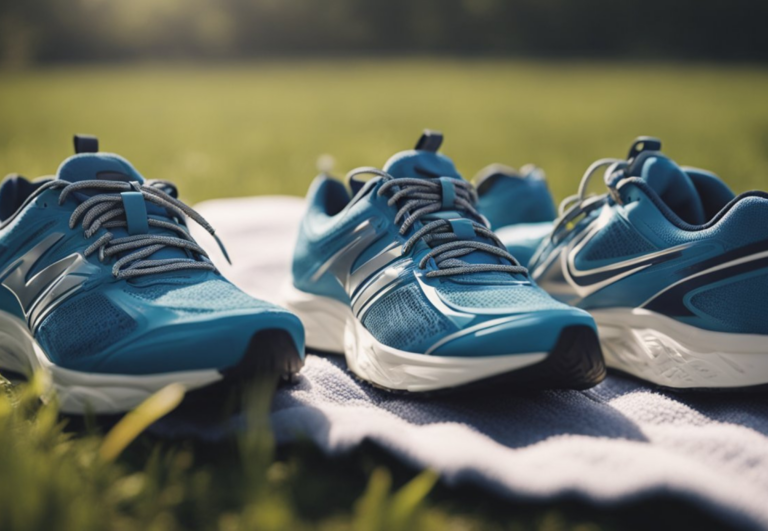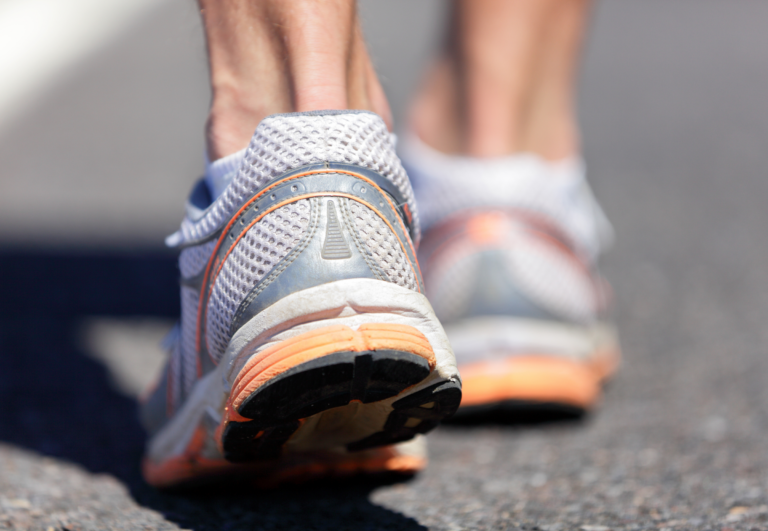Running in Headphones: Comparing 5 of the Most Popular Styles
If you’re a runner and you love listening to music or your favorite podcasts, then wearing headphones while running may seem like a great idea. Is it really that simple?
Yes, you can run in headphones safely and comfortably. Try to avoid running on busy, heavily trafficked routes. Look for quieter streets, a local park, the school track, or an indoor track or treadmill. If those are not available, your choice of headphone type and how you use them are important so you can be alert and aware of your surroundings.
Keep reading to learn more about running with headphones, including when it’s best not to. We’ll also discuss the different types of headphones and their characteristics and features, so you can make the best choice for you.
Is it okay to wear headphones while running?
Some runners prefer to run in silence and be alone with the road, while others appreciate running to a beat, and others still use the time to multitask and catch up on a podcast. While each of these is a valid choice, is it actually okay to wear headphones while running?
You can run in headphones – safely and comfortably – but you will need to pick appropriate times and places for your run. The safest choices for running with headphones are pedestrian-only areas, such as in the park, on trails, at the track, and on a treadmill. Running in busy urban areas with lots of traffic and many intersections to cross requires you to maintain awareness of the sounds around you.
That’s why it’s important to select the right type of headphones for your situation.
Headphones that block too much of the outside noise may make for better listening but they also reduce your awareness of your surroundings. Keeping the volume low helps. Some runners opt for leaving one ear open when they need more attention to traffic and people around them.
The comfort and stability of the headphones are important to your enjoyment of the run. Poorly fitting headphones may become loose or uncomfortable.
Earbuds need to fit securely into your ear canal. If they are too snug you will find them uncomfortable; if they are too loose, they can fall out.
Over-ear or on-ear headphones have adjustable headbands but still may not provide enough tension to hug your head securely, allowing the headphones to bounce and move while you run.
Can you wear headphones while running a race?
Running in your neighborhood is one thing, but what about a race situation?
Most races allow headphone use, but some have restrictions, and some ban them completely. The two primary racing governing bodies in the country, USA Track and Field (USATF) and Road Runners Clubs of America (RRCA) have guidelines restricting the use of personal music devices at races.
There are legitimate safety reasons as well as legal liability reasons for race organizers to restrict or ban headphones.
Because many races are insured by the RRCA, following those guidelines may be required of the race directors. They are responsible for coordinating with local police and traffic authorities for the safety of sometimes thousands of runners, over miles of streets.
Things can go wrong.
Vehicles may ignore barriers that are meant to keep them off the race route. Emergency vehicles may need to use the race route to get to someone in need of help. Race participants need to be alert to their surroundings.
Still, you will still see many runners wearing headphones at races. Not all races restrict headphone use and even those that do find that many participants do not read the rules and regulations. Add to that the difficulty of enforcing restrictions on race day with a mostly volunteer support staff and you’re likely to see runners wearing them whether or not it’s permitted.
So, what should you do?
Check the race website for rules and regulations, and follow them. Even if the race allows headphones, for the reasons listed above you may want to consider leaving them in your bag.
Wondering if you can wear your earbuds during up an upcoming marathon? Check out this article for how to find out (plus why you shouldn’t).
Potential problems when running with headphones
On the plus side, listening to music, podcasts, or audiobooks can make for a more enjoyable run. They can improve your mood, make time pass faster, and even help you pick up the pace.
To have the best possible experience running with headphones, be alert to the potential problems:
- Discomfort – Poorly fitting headphones can be a real pain in the ear. Make sure the headphones fit correctly. Buy headphones that feel snug yet comfortable, and make the adjustments you can for optimum fit.
- Instability – Don’t assume that because they feel secure while you’re sitting or standing, your headphones will stay secure while you run. Try before you buy, if possible.
- Poor sound quality – You need good enough sound quality to be able to enjoy listening, otherwise what is the point of running with headphones? Generally, look for known brands, try them first if possible, and make sure you can return them if you are not happy with the sound quality.
- High price – Thanks to great improvements in headphone technology and affordability over the last 20 years, you do not need to drain your savings to get quality headphones. Do your research, shop the sales, and you’ll find reasonable prices and occasionally a steal.
- Fragility – If you tend to be hard on your electronics and/or you run in all kinds of weather, there are more rugged, water-resistant, or waterproof headphones designed for use in workouts or runs.
- Outside sound isolation – Again, if you’ll be running on roads, in traffic, or in busy areas, look for headphones that do not block so much of the ambient sound that you lose awareness of the outside sounds.
Differences in headphone styles
There are different types of headphones, and within each type, different features.
When choosing the right headphones for your run, you’ll need to narrow it down to one of the following styles before choosing a specific model:
- Over-ear (circumaural) headphones
- On-ear (supra-aural) headphones
- In-ear earbuds
- Classic earbuds
- Bone conduction
Think about what you value most in headphones as you review this brief explanation of the types.
Over-ear (circumaural) headphones
Over-ear headphones are the classic headphone design.
The over-ear headphones provide optimal sound quality and noise-canceling but are heavier and bulkier than other types and, therefore, may be less stable. The padding around each ear, adjustability, and tension provided by the headband can provide some stability.
Some runners will use a knit cap in cool or cold weather to help keep these in place.
For a good over-ear headphone, check out the TrebLab Z2. While they would not be a good choice for running in the rain, they are sweatproof (rated IPX4).
On-ear (supra-aural) headphones
On-ears are a slightly lighter, smaller version of over-ears.
They don’t seal but rest on the ear. They may allow a bit more noise than over-ear headphones, but they still have good noise-canceling properties.
The reduced weight helps make them less unstable than over-ear types.
These Rtusia on-ear headphones are highly reviewed and specifically recommended for running as they allow the runner to hear what’s going on around them.
In-ear earbuds
In-ear earbuds fit entirely inside the ear, which may help relieve concerns about them slipping out or moving around during a run.
Small, light, and typically waterproof, these fit directly into the ear canal to keep them secured. Most come with three or more choices of eartips (rubber rings that fit into the ear canal), so you can choose the best fit for maximum stability and comfort.
The Samsung Galaxy Bud Live is a popular choice. For a waterproof option, check out the Tozo T12 Wireless Earbuds.
Classic earbuds
For runners who find in-ear earbuds uncomfortable, these may be easier to tolerate. They are, however, a bit less secure.
Small and light, classic earbuds nestle into your ear rather than extending into the ear canal.
Apple AirPods are the most well-known version of this style.
Bone-conduction
Unlike most headphone styles that play sounds directly into your ear, this style delivers the sound through your cheekbones using vibrations.
Because of the unique delivery method, you can hear what is going on around you. The sound quality will be a notch below earbuds, but the added awareness may be worth the tradeoff. They are very stable and well-suited for running.
The Shokz OpenMove headphones are water resistant (rated IP55) and allow you to listen to great-quality sound while staying aware of your surroundings.
Most important criteria for running headphones
We’ve covered many bases already when it comes to running with headphones, but now let’s look at some of the most important factors to consider when purchasing a new pair of headphones to take on your next run.
The most important criteria when buying running headphones are:
- Safety
- Cost
- Comfort
- Stability
- Sound quality
- Weather resistance and durability
Let’s look at why each of these is important and exactly what you should look for when choosing headphones.
Safety
When you usually run will be one of the most considerations when considering how important safety is in your headphone choice.
The more outside noise headphones block, the less you will be aware of what is happening around you. Large or noise-canceling headphones are a potentially dangerous choice when running outside, near vehicles, or in large groups. However, they may be the ideal choice for running on a treadmill.
Bone conduction headphones do not block outside noise, but they rate lower in sound quality. They may be the best choice if safety is your primary concern.
Consider your circumstances and priorities, and compare that to the characteristics of the headphones to find the best fit for you.
Cost
The quality, brand, and style of headphones you choose will play a large factor in the cost.
The price range for running headphones can be from $15 to $1,000+, with most of the high-end dollars going toward maximum sound quality. Unless you are an audiophile or have unlimited resources, a more reasonable range for headphones is from $30 to $200 for in-ear and bone-conduction types, and $100 to $500 for over-ear and on-ear headphones.
You don’t need to pay an arm and a leg for good headphones, but you may need to do some research to find the right balance of quality and price.
Comfort
Comfort is the most personal of all the considerations when buying running headphones.
Some people cannot tolerate in-ear for more than a few minutes, while others wear them all day. Some find well-padded over-ear or on-ear to be the most comfortable, even though others find them bulky.
You may already know which type you prefer, so don’t choose a style you know you don’t like just because they’re trendy. If you’re not sure, find somewhere you can test the headphones out before trying.
Stability
Stability refers to the amount of movement your headphones will experience during your run. The more movement, the more likely you are to be distracted or that they will fall off.
In-ear headphones will always be more stable than even well-fitted on-ear or over-ear headphones, but if your priority is sound quality, you may find the difference in stability less important.
Again, your preferred running style will also affect your choice here. Treadmill runners may be able to handle a little less stability than someone who prefers to run hiking trails.
Sound Quality
Depending on what you’re looking for in a set of headphones, you may desire the very best sound quality from your headphones.
Over-ear and on-ear headphones provide the best quality and noise reduction, but at a price.
In-ear and classic earbuds can provide very good sound quality with name brands like Sony and Samsung, although lesser-known brands like Cambridge Audio Melomania compare very well at a lower price.
Weather Resistance/Durability
When choosing headphones, you’ll want to consider how they’ll fair when you work up a sweat or go running in the rain.
If you run in all conditions, there are some good in-ear and bone-conduction waterproof choices. Many in-ear and classic earbuds are weatherproof.
There are no on-ear or over-ear headphones that are waterproof, although the previously mentioned TrebLab Z2 is water-resistant.
If you are a fair-weather or indoor runner, this is less of an issue, but you will still want to look for sweatproof models, and check the reviews regarding durability.
What is the best style of headphones to run in?
With all these considerations, what is the best style of headphones to run in?
In-ear earbuds are the best overall choice for running. They are versatile and suitable for any running conditions. They are comfortable, lightweight, stable, affordable, and can provide good sound quality. It is no coincidence that these are so popular among runners.
Bone-conduction headphones are a solid second choice. They win when safety is the primary objective, but they are outperformed for sound quality by the other types. They provide the best awareness of the sounds around you while you run. They are stable, weatherproof, and the cost is competitive with in-ear and classic earbuds.
- About the Author
- Latest Posts
Frank Duchossois is a distance runner, endurance athlete, and USA Track and Field Certified Coach.
He has run hundreds of races, with distances ranging from 400 meters to 100 miles. He has run 40 marathons and ultra-marathons, including 12 Boston Marathons and the Grand Canyon Double Crossing. He is a five-time recipient of the USATF Phidippides Award for outstanding performance and endurance in long distance running, and has run multiple sub 3-hour marathons after age 50.
Frank lives in Cleveland with his wife, and when he is not running, he works as a Business Systems Analyst.






